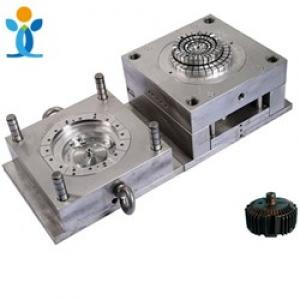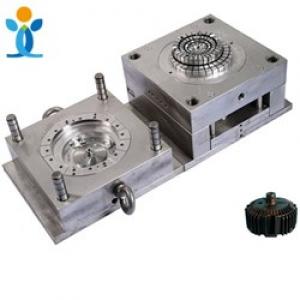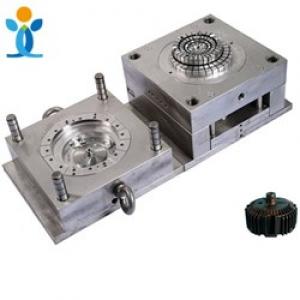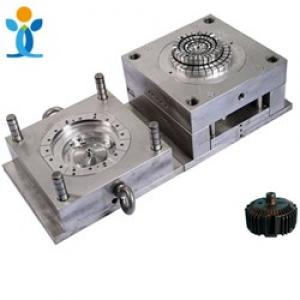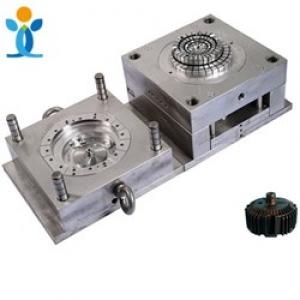injection molding
Injection molding is a method of industrial product production molding. Products usually use rubber injection molding and plastic injection molding. Injection molding can also be divided into injection molding compression method and die casting method. Injection molding machine (abbreviated as injection molding machine or injection molding machine) is the main molding equipment that uses plastic molding molds to make various shapes of plastic products from thermoplastic or thermosetting materials. Injection molding is achieved through injection molding machines and molds.
Main types
1. Rubber injection molding: Rubber injection molding is a production method that directly injects rubber material from the machine barrel into the model for vulcanization. The advantages of rubber injection molding are: although it is an intermittent operation, the molding cycle is short, the production efficiency is high, and the embryo preparation process is cancelled. The labor intensity is low, and the product quality is excellent.
2. Plastic injection molding: Plastic injection molding is a method of plastic products that uses pressure to inject molten plastic into plastic product molds, and then cools them to form various desired plastic parts. There are mechanical injection molding machines specifically designed for injection molding. The most commonly used plastics at present are polyethylene, polypropylene, ABS, PA, polystyrene, etc.
3. Injection molding: The resulting shape is often the final product, and no further processing is required before installation or use as the final product. Many details, such as protrusions, ribs, and threads, can be formed in one step of injection molding.
Fundamentals of Technology
The purpose, operation, and results of temperature, pressure, speed, and cooling control
How the adjustment of injection molding machine settings affects the process and quality
● Optimize screw control settings
● Multi stage filling and multi stage pressure control; The Influence of Crystalline, Amorphous and Molecular/Fiber Alignment on Process and Quality
The influence of internal stress, cooling rate, and plastic shrinkage on the quality of plastic parts
Rheology of plastics: how plastics flow, align and change viscosity, shear and molecular/fiber alignment relationships
The relationship between pouring system, cooling system, mold structure and injection molding process
Problem analysis and resolution
Description and analysis of common injection molding problems such as shrinkage, shrinkage, incomplete mold, burrs, fusion marks, silver wire, spray marks, charring, warping deformation, cracking/cracking, dimensional deviation, and other common injection molding problems, as well as solutions in mold design, molding process control, product design, and plastic materials.
Analysis of reasons for lack of adhesive and insufficient mold around injection molded parts and corresponding solutions
Analysis of the causes of burrs and corresponding solutions
Analysis of causes and solutions for surface shrinkage and porosity (vacuum bubbles) of injection molded parts
Analysis and solutions to the causes of silver streaks (material splashes, water splashes), burning, and air streaks
Analysis of causes and solutions for water ripples and flow marks on the surface of injection molded parts
Analysis of the causes and solutions of water marks (fusion marks) and spray marks (snake marks) on the surface of injection molded parts
Analysis of the causes of surface cracks (cracking) and top white (top explosion) in injection molded parts and corresponding solutions
Analysis and solutions to the causes of color difference, poor gloss, color mixing, black stripes, and black spots on the surface of injection molded parts
Analysis of the causes of warping deformation and internal stress cracking in injection molded parts and corresponding solutions
Analysis of the causes of dimensional deviations in injection molded parts and corresponding solutions
Analysis and solutions to the causes of mold sticking, dragging (pulling), and whitening in injection molded parts
Analysis of the reasons and solutions for insufficient transparency and strength (brittle fracture) of injection molded parts
Problem analysis and resolution
Description and analysis of common injection molding problems such as shrinkage, shrinkage, incomplete mold, burrs, fusion marks, silver wire, spray marks, charring, warping deformation, cracking/cracking, dimensional deviation, and other common injection molding problems, as well as solutions in mold design, molding process control, product design, and plastic materials.
Analysis of reasons for lack of adhesive and insufficient mold around injection molded parts and corresponding solutions
Analysis of the causes of burrs and corresponding solutions
Analysis of causes and solutions for surface shrinkage and porosity (vacuum bubbles) of injection molded parts
Analysis and solutions to the causes of silver streaks (material splashes, water splashes), burning, and air streaks
Analysis of causes and solutions for water ripples and flow marks on the surface of injection molded parts
Analysis of the causes and solutions of water marks (fusion marks) and spray marks (snake marks) on the surface of injection molded parts
Analysis of the causes of surface cracks (cracking) and top white (top explosion) in injection molded parts and corresponding solutions
Analysis and solutions to the causes of color difference, poor gloss, color mixing, black stripes, and black spots on the surface of injection molded parts
Analysis of the causes of warping deformation and internal stress cracking in injection molded parts and corresponding solutions
Analysis of the causes of dimensional deviations in injection molded parts and corresponding solutions
Analysis and solutions to the causes of mold sticking, dragging (pulling), and whitening in injection molded parts
Analysis of the reasons and solutions for insufficient transparency and strength (brittle fracture) of injection molded parts
Analysis of the causes of cold spots and peeling (delamination) on the surface of injection molded parts and corresponding solutions
Analysis of the causes of poor metal inserts in injection molded parts and corresponding solutions
Analysis and improvement measures for nozzle salivation (runny nose), glue leakage, nozzle drawing, nozzle blockage, and difficulty in mold opening
Utilize CAE mold flow analysis technology to quickly and effectively solve on-site injection molding problems
